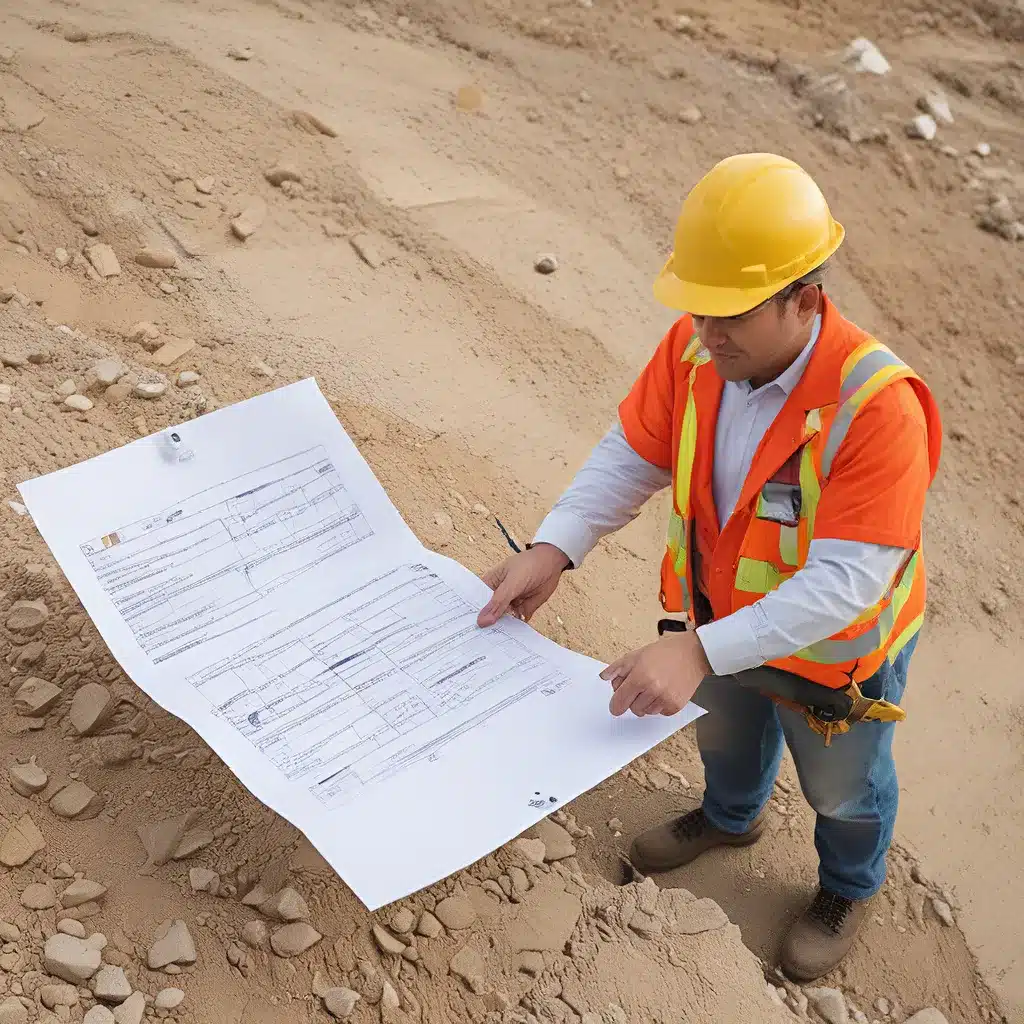
Ah, the world of general contracting – where navigating a labyrinth of regulations is as much a part of the job as hammering nails and pouring concrete. In an industry that’s constantly evolving, staying ahead of the regulatory curve is no easy feat. But fear not, my fellow construction enthusiasts, for I’m here to guide you through the ever-changing regulatory landscape, arming you with the strategies and insights needed to thrive in this dynamic environment.
Regulatory Rumblings in the Construction Industry
The construction industry, much like a well-built structure, operates within a intricate framework of regulations. But just as the skyline is ever-changing, so too are the rules that govern our beloved trade. From advancements in technology to environmental concerns and societal expectations, the regulatory landscape is in a perpetual state of flux.
Take, for instance, the global construction market, which is predicted to reach a staggering $172 trillion by 2030, according to a study by Next Move Strategy Consulting. But this growth trajectory is inextricably linked to a myriad of regulatory requirements that shape the industry’s operating landscape. Building codes, safety standards, environmental regulations, and labor laws – the list goes on, and it’s our job as construction professionals to stay on top of it all.
The Ripple Effect of Regulatory Changes
The impact of regulatory changes on construction firms is akin to a pebble dropped into a still pond – the effects can be far-reaching and profound. Non-compliance with these ever-evolving mandates can result in legal liabilities, project delays, reputational damage, and financial penalties. Worse still, failing to adapt to regulatory changes can hinder innovation, stifle growth opportunities, and erode the trust of our stakeholders.
Imagine a scenario where a construction firm stubbornly clings to outdated safety protocols, only to find themselves embroiled in a costly lawsuit after a preventable accident. Or envision a company that ignores new environmental regulations, only to be slapped with hefty fines and the ire of the local community. These cautionary tales underscore the critical importance of staying ahead of the regulatory curve.
Strategies for Navigating the Regulatory Maze
So, how can construction firms like ours navigate this ever-changing regulatory landscape? Well, my friends, it’s all about being proactive, strategic, and, dare I say, a little bit tech-savvy. Let’s dive into the key strategies that can help us thrive in this dynamic environment:
Regulatory Intelligence
Establishing robust systems for monitoring, analyzing, and disseminating regulatory updates is the first step. This involves leveraging technology solutions, engaging with regulatory authorities, and participating in industry associations to stay informed about the changes that impact project planning and execution.
Compliance Management Systems
Implementing comprehensive compliance management systems enables us to track and manage regulatory requirements across projects, jurisdictions, and stakeholders. This includes developing internal policies, procedures, and training programs to ensure adherence to applicable regulations and standards.
Risk Mitigation Strategies
Identifying and mitigating regulatory risks is crucial for safeguarding project timelines, budgets, and outcomes. By proactively assessing regulatory risks through risk assessments, scenario planning, and contingency measures, we can minimize potential disruptions and liabilities.
Stakeholder Engagement
Engaging with regulatory authorities, industry associations, community stakeholders, and project partners fosters collaboration, transparency, and trust. By actively participating in regulatory consultations, advocacy efforts, and stakeholder dialogues, we can influence regulatory outcomes and shape policies that align with our industry’s interests.
Technological Innovation
Embracing technology solutions can streamline regulatory compliance, enhance project efficiency, and improve decision-making processes. From building information modeling (BIM) and drones to sensors and data analytics, the construction industry is ripe for digital transformation.
Blockchain and Automation
The integration of blockchain technology and the adoption of virtual reality, remote monitoring systems, and artificial intelligence-powered predictive analytics can revolutionize the way we approach regulatory compliance. These cutting-edge solutions can enhance transparency, traceability, and security, while optimizing resource utilization and minimizing compliance costs.
Putting It All Together: Success Stories from the Field
To illustrate the practical implications of adapting to regulatory changes, let’s take a look at two case studies that showcase the strategies in action:
Implementing Sustainable Building Practices
Reading General Contractor, a leading construction firm in the Pacific Northwest, has made a concerted effort to align its operations with the region’s stringent environmental regulations. By embracing sustainable building practices, such as the use of recycled materials, energy-efficient systems, and on-site waste management, the company has not only minimized its environmental footprint but also positioned itself as a trusted partner for eco-conscious clients.
Leveraging Digital Transformation for Regulatory Compliance
In the Midwest, Acme Construction has invested heavily in digital solutions to streamline its regulatory compliance efforts. By deploying cloud-based collaboration platforms, robotic process automation, and AI-powered predictive analytics, the company has been able to efficiently manage project documentation, automate repetitive tasks, and anticipate potential compliance issues – all while enhancing overall operational efficiency and project outcomes.
Embracing the Regulatory Evolution
As the construction landscape continues to evolve, staying abreast of regulatory developments and proactively adapting to changes will remain essential for driving industry progress and achieving long-term success. By embracing the strategies outlined in this article, construction firms can position themselves for success in an industry poised for significant growth and transformation.
So, my fellow construction enthusiasts, let’s raise a hammer to the future – one where regulatory compliance is not a burden, but a strategic advantage. Together, we can navigate the ever-changing regulatory landscape, fostering innovation, enhancing sustainability, and delivering exceptional results for our clients and communities. The construction industry is ours to shape, and the time to adapt is now.
Related posts:
No related posts.




